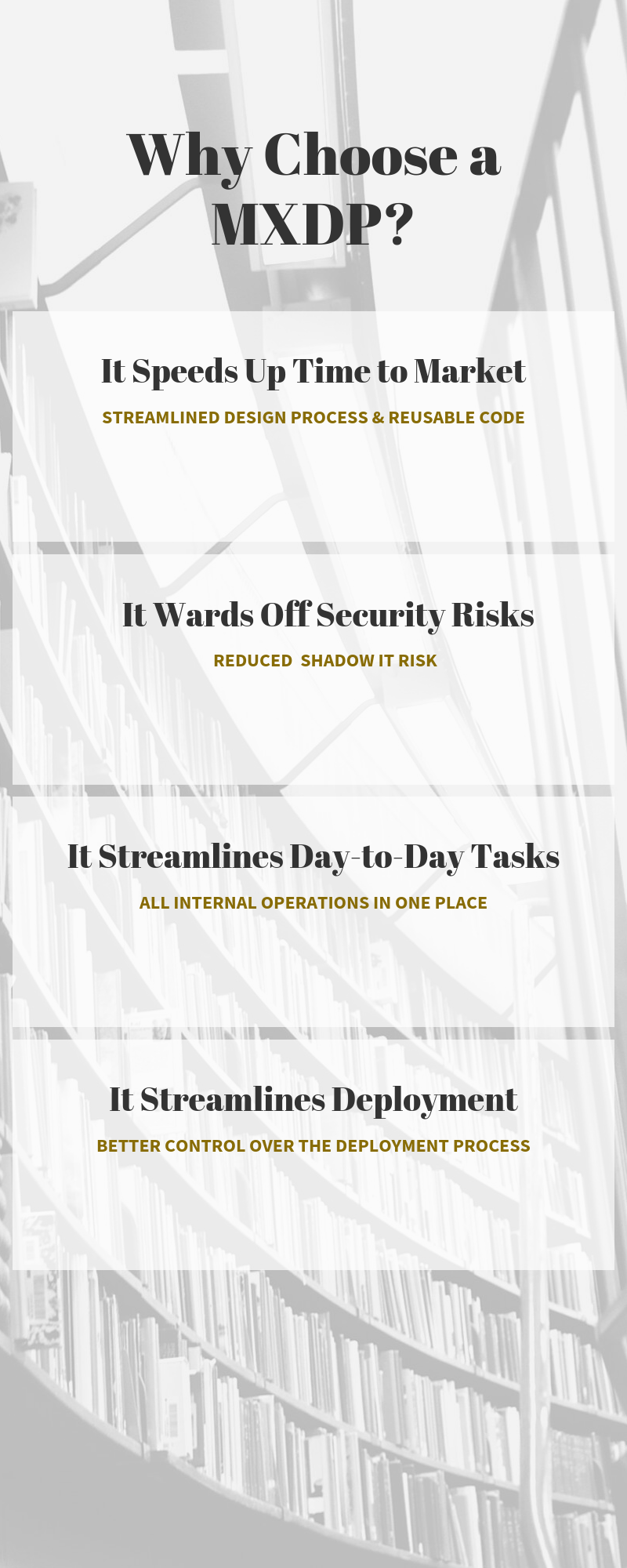
We’re excited to hear your project.
Let’s collaborate!

Chatbots, wearable apps, immersive apps, progressive web apps, conversational apps... It's a fact: applications as we know them are growing into... multiexperience apps. So you should consider powering your own app infrastructure with a multiexperience development platform.
But first, you may want to reflect on the limitations of your current app development platform: it supports web and mobile applications only...
By comparison, a MXDP would adjust the digital user experiences that you create to a multitude of interaction modalities — touch, gesture, voice — and devices: web browsers, smartwatches, smartphones, voice-driven devices...
And it's complete experiences that users expect these days...
The term “multiexperience” incorporates:

Photo by Brina Blum on Unsplash
“And what is multiexperience development” you might further ask yourself.
Take it as the process where, using a plethora of different technologies, you create multiple fit-for-purpose applications. Apps perfectly tailored to suit different touchpoint-specific modalities (voice, audio, gesture...).
According to Gartner Inc's research, organizations face an increasing challenge to create digital user experiences that go beyond those delivered through web and mobile apps.
For data is becoming extremely accessible and being “consumed” in an overwhelming no. of ways: hands-free, mobile, voice, etc. While convenience and personalization are now the key elements of great user experience...
So, you should consider switching from mobile-focused app development to a multiexperience (app) development strategy.
You should consider future-proofing your applications by “injecting” them with multi experiences.
From wearable apps to conversational apps (chatbots and voice assistants), to progressive web apps, and immersive apps... there's a wide range of apps of the future that incorporate and deliver multiple experiences.
But how could you possibly develop apps perfectly adjusted to each channel, each user interaction modality? Apps adapted to the given customer contexts...
You opt for an all-technologies-in-one multiexperience development platform...
"What are they more precisely?" Keep on reading...
A multiexperience development platform is... the mobile app development platform of the future. It enables you to develop one app and then deploy it across a whole variety of devices and platforms.
From AR to wearable, to chat and voices, an MXDP speeds up the development of a plethora of targeted, seamless and highly scalable digital user experiences...

Now, let's talk... clear benefits. Are they strong enough so you take the leap from your already familiar mobile app development platform?
Well, judge for yourself. Here are the 4 strongest reasons to move to an MXDP:
How long does it take you now to deploy an app to Amazon Web Services or to any other cloud services provider?
Now, imagine sending your data straight to your AWS account...
Moreover, when using a multiexperience development platorm you get a full-distributed environment. And that can only translate into better control over your own deployment.
Add this convenience, as well, to the whole cloud-based deployment process and... try to anticipate how much time you'd save.
Faster day-to-day operations...
How does an MXDP help you achieve this goal? It's quite obvious:
A central, interconnected system incorporates and thus streamlines all your internal processes.
As opposed to struggling to orchestrate a heavy network of various different programs, one for each type of day-to-day internal task.
And there are 2 main “culprits” behind this benefit of using a multiexperience development platform:
Furthermore, if you release faster, you get user feedback faster so... you can apply the needed improvements... faster.
Have you ever tried to count the apps, IT systems, devices, services, and infrastructure that are being used across your organization? Is it even possible to keep track of them all?
Well, that's one of the strongest benefits of using an MXDP: you get a bird's eye view over your software asset.
This way, you can remove the risk that shadow IT poses.
The END!
Quite curious now: are all these predictions regarding the multi-experiences apps and reasons for switching to an MXDP strong enough for you to... take the leap?
Main Image by JESHOOTS.COM on Unsplash

We’re excited to hear your project.
Let’s collaborate!